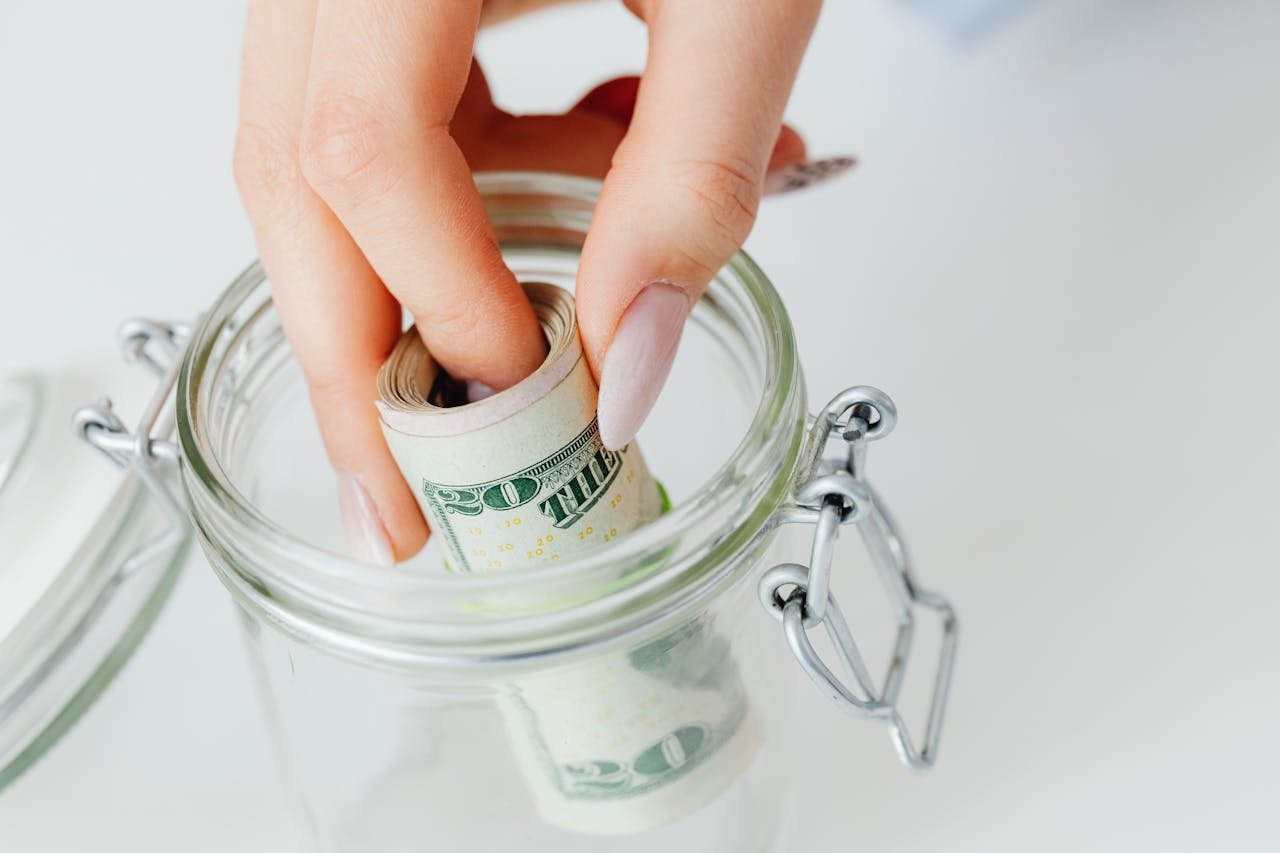Emergency Fund 101: Why Saving Money Now Protects Your Future
In a world full of uncertainties—economic downturns, unexpected medical bills, sudden job loss—having an emergency fund isn’t just a nice-to-have; it’s essential. Yet, many people delay or overlook building one until it’s too late. In this guide, we’ll walk you through everything you need to know about emergency funds, why they matter, and how to start building yours today.

Contents
- 1 What Is an Emergency Fund?
- 2 Why Is an Emergency Fund So Important?
- 3 How Much Should You Save?
- 4 Where Should You Keep Your Emergency Fund?
- 5 How to Build an Emergency Fund (Even on a Tight Budget)
- 6 Common Mistakes to Avoid
- 7 What If You Already Have Debt?
- 8 How an Emergency Fund Protects Your Future
- 9 Final Thoughts: Your Future Self Will Thank You
What Is an Emergency Fund?
An emergency fund is a dedicated savings account that you can tap into during financial emergencies. These can include:
-
Medical emergencies
-
Job loss or sudden reduction in income
-
Major car or home repairs
-
Unexpected travel expenses for family emergencies
Think of it as a personal safety net. It’s there to protect you from going into debt or derailing your financial goals when life throws you a curveball.
Why Is an Emergency Fund So Important?
-
🛡️ Financial Protection
Life is unpredictable. Without an emergency fund, even minor setbacks can become major stressors. Instead of relying on credit cards or personal loans—both of which come with interest and fees—your emergency fund allows you to handle problems head-on with your own resources. -
🧘♀️ Peace of Mind
Knowing you have funds set aside can reduce anxiety and give you peace of mind. Financial stress is one of the top causes of anxiety, and having a cushion can dramatically improve your mental and emotional well-being. -
📉 Avoid Debt Spiral
Relying on credit cards to manage emergencies can trap you in a cycle of high-interest debt. An emergency fund keeps you from digging a financial hole that can be difficult to escape. -
💡 Flexibility and Confidence
Want to switch careers, move to a new city, or go back to school? An emergency fund offers the freedom to make life-changing decisions without being paralyzed by financial fears.
How Much Should You Save?
A general rule of thumb is to save three to six months’ worth of living expenses. However, this varies based on individual circumstances:
-
Single income households: Aim for at least 6 months
-
Dual income households: 3–4 months may suffice
-
Freelancers or gig workers: 6–12 months due to variable income
Calculate your monthly expenses—including rent/mortgage, groceries, utilities, transportation, insurance, and minimum debt payments—and multiply by the number of months suitable for your situation.
Example: If your monthly expenses are $3,000, a 6-month emergency fund would total $18,000.
Where Should You Keep Your Emergency Fund?
Your emergency fund should be:
-
Accessible (but not too easily accessible)
-
Separate from your daily spending accounts
-
Earning some interest
The best places include:
-
High-yield savings accounts
-
Money market accounts
-
Short-term certificates of deposit (CDs), only if they allow penalty-free withdrawals
Avoid keeping your emergency fund in stocks or investment accounts, as market fluctuations could reduce your fund just when you need it most.
How to Build an Emergency Fund (Even on a Tight Budget)
-
🎯 Set a Goal
Start small. If six months’ worth seems daunting, aim for $500 or $1,000 to begin with. Reaching a milestone creates motivation to keep going. -
💰 Automate Your Savings
Set up an automatic transfer from your checking account to your emergency fund every payday—even $20 a week adds up. -
✂️ Cut Unnecessary Expenses
Review your subscriptions, dining out habits, and other non-essential expenses. Redirect that money into your savings. -
🛍️ Use Windfalls Wisely
Tax refunds, bonuses, or cash gifts? Resist the urge to splurge and put them straight into your emergency fund. -
📈 Increase Contributions Over Time
As your income grows or you pay off debt, increase your savings rate. Consider directing raises or side hustle income into your emergency fund.
Common Mistakes to Avoid
-
📉 Using your emergency fund for non-emergencies (like vacations or sales)
-
🔄 Failing to replenish it after use
-
🔐 Making it too hard to access during real emergencies
-
🎯 Not setting a realistic target amount
It’s called an “emergency” fund for a reason. Be disciplined about when and how you use it.
What If You Already Have Debt?
It’s a common dilemma: Should you save or pay off debt first? Ideally, do both. Start with a small emergency fund—$500 to $1,000—while focusing on high-interest debt repayment. Once your urgent debt is under control, shift focus toward growing your emergency savings.
How an Emergency Fund Protects Your Future
Beyond the obvious financial security, an emergency fund enables long-term wealth-building. Here’s how:
-
Prevents the need to tap into retirement savings early
-
Keeps your credit score intact by avoiding late payments
-
Lets your investments stay untouched and continue growing
-
Gives you the freedom to take calculated risks, such as starting a business
Final Thoughts: Your Future Self Will Thank You
An emergency fund isn’t just a financial tool—it’s a life strategy. It shields you from uncertainty, provides breathing room in crisis, and empowers you to make confident decisions. Whether you’re living paycheck to paycheck or building wealth, there’s no better time than now to start saving.
Remember: every dollar counts, and small steps add up. Start today, and protect the tomorrow you’re working so hard to build.




